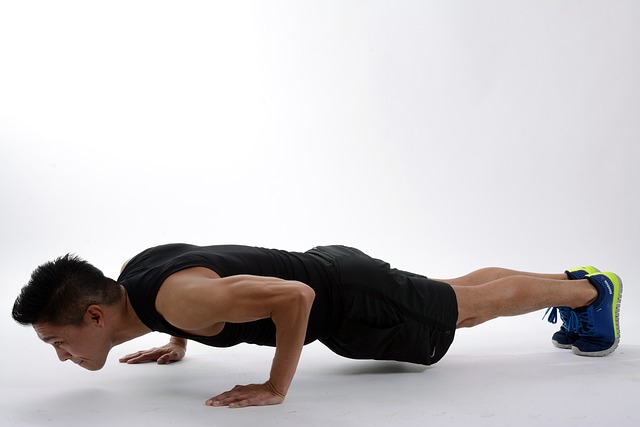One of the ongoing debates about weight loss exercise is whether to focus on aerobic activity or weight training. Those looking to reduce weight used to focus on exercise and shun physical training. After all, gaining muscle can lead to weight gain.
However, muscle is a lean tissue. Increasing the amount of lean tissue in your body improves your overall body composition and may even provide some metabolic benefits that help with weight loss.
This does not mean you should forgo cardio. Cardio and weight training are two distinct types of exercise, but when combined, they provide a potent combo for fat loss results.
What Exactly Is Strength Training?
Strength training, often known as resistance training, aids in the development and strengthening of muscles. Moving your body against resistance is what strength training is all about. Dumbbells, barbells and weight plates, resistance bands, and kettlebells are examples of resistance tools.
You might also just move your body against gravity. Bodyweight exercises like lunges and push-ups are extremely helpful in increasing strength.
Regular Weight Loss Advantages
Weight training burns calories just like any exercise. A traditional weight training session will typically burn fewer calories than a rigorous aerobic session. However, resistance exercise can also help you achieve your weight loss objectives in other ways.
Because muscle has a little greater metabolic rate than fat, having more muscle aids in increasing your resting metabolic rate (energy expenditure). However, the variations are minor. Even at the most optimistic projections (which are debatable), it is only a few calories per day for each pound of muscle gained. That is beneficial, but it is not life-changing.

However, weight exercise is essential for muscle maintenance, especially if you are dieting. When you lose weight by limiting your calorie intake, you are more likely to lose muscle mass. Ideally, you want to lose fat while maintaining your muscle mass.
Weight training helps you maintain lean muscle while losing weight and offers numerous additional health and performance benefits, such as boosting bone density and enhancing the quality of life as we age.
What Exactly Is Cardio?
Cardio is any movement that boosts your heart rate and keeps it up throughout the workout.
Cardio is also known as an aerobic activity because your body uses oxygen to convert glucose into the fuel during this sort of activity. Aerobic implies “containing oxygen.” Because your oxygen needs increase during cardio or aerobic activity, you’ll notice that your breathing grows deeper.
Aerobic activity can be done at three different levels of intensity: low, moderate, and high. Cardio or aerobic activity can be classified into several types:
Steady-state cardio is when you engage in activities such as cycling, running, or taking an aerobics class while keeping your heart rate steady for the duration of your workout.
Steady-state cardio is frequently (but not always) performed in a moderate range, defined by the Centers for Disease Control (CDC) as 64% to 76% of your maximum heart rate.
High-intensity interval training (HIIT) mixes intense aerobic exertion with brief periods of rest. Because this form of workout demands you to work at a high intensity (between 77% and 93% of your maximal heart rate), it is often shorter in time than steady-state cardio workouts.
Weight Loss Advantages
Scientific studies that show a particular level of fat reduction with cardio against weights appear from time to time, and for the most part, cardio surpasses weights in any realistic comparison.
The fundamental advantage of moderate-intensity steady-state aerobic exercise is that it may be done continuously for considerably longer than the intermittent job of lifting weights.
This constant mobility provides cardio an inherent edge in terms of energy consumption during a training session.
Researchers have also discovered that moderate-intensity movement, such as brisk walking, provides health benefits while posing no significant risk of harm.
A session of moderate-intensity exercise is more reachable and feasible for many people.
However, while both moderate-intensity cardio workouts and high-intensity cardio workouts are known to be useful for weight loss, 10 researchers frequently single out HIIT sessions as being more effective for fat loss, in part due to the shorter and more efficient workouts.
HIIT allows you to burn calories in a shorter amount of time if you don’t have a lot of time in hand for a workout.
Another advantage of HIIT workouts is the ability to combine weight training and aerobic movement in circuit training sessions to deliver an added boost.
For instance, your workout could involve intervals of jumping jacks and burpees. Both movements are hard enough to keep your heart rate raised, but the burpee adds resistance training with your own body weight.
Finally, HIIT workouts (either simply cardio or a combination of cardio and resistance training) may allow you to profit from excess post-exercise oxygen consumption or EPOC. When you work out hard, your body continues to consume extra oxygen in the hours following your workout.
This increase in oxygen consumption (also known as the “afterburn”) causes an increase in caloric expenditure for up to 14 hours after exercise.
Weights vs. Cardio
Resistance training and cardio workouts can both help you burn more calories per day and achieve a caloric deficit in order to decrease body fat. Furthermore, if you plan your weight training in a circuit-style workout to keep your heart rate high, both weight training and HIIT workouts should help you burn more calories due to EPOC.
Is it important to select between cardio and weight training when your objective is to lose weight? Doing both may be your best bet.
Combining weight training and cardio into a comprehensive program may imply doing cardio on some days of the week and weight training on others. Others choose to incorporate both exercises into a single workout.

For example, on Monday, Wednesday, and Friday, you may perform 50 minutes of cardio and then weight training on Tuesday and Thursday. If you have less time, you may do three 25-minute high-intensity workouts each week that combine vigorous aerobic activity with muscle-building activities.
Any situation in which cardio exercise and weight training are combined into a comprehensive exercise program can help you grow muscle, improve cardiovascular fitness, contribute to weight loss, and can also meet the current physical activity guidelines for Americans.
How to Get the Best Outcomes
Use these five recommendations to create an exercise and weight-reduction fitness plan that will help you shed body fat.
Combine resistance training with a circuit training program or a similar anaerobic training program in which you work out at a relatively high level on escalating workstations.
Don’t neglect rest and healing. On the days following strenuous workouts, take time off for total rest or active rehabilitation.
During the recovery phase, your muscles regenerate and strengthen. Rest intervals also provide your body and mind with much-needed rest from activity.
Find an activity that you enjoy. If you enjoy the activities you have chosen, your program is more likely to be sustainable. If you do not typically draw toward exercise or the workout environment, experiment with different types of activities in different situations. Maybe a playground Bootcamp is the best option for you. Try barre classes, spin classes, or home exercises with a neighbor.
Take good care of your physique. Your nutritional strategy will be crucial in achieving your weight loss target. Make sure you’re getting enough calories and receiving enough protein, carbohydrates, and good fats. A dietician can help you in developing a customized plan.
Lift more weights. Your weight training should be difficult. Low reps and heavy weights increase muscle strength, whereas high reps and light weights tone and increase endurance. Both are useful. Aim for a weight/rep combination that provides adequate intensity for a robust workout while requiring the least amount of recovery.
To Conclude
When it comes to weight loss, both weight training and cardio are beneficial. Resistance training and aerobic activities are also beneficial to one’s health.
So there is no need to pick between the two. Include both types of training in your workout routine. This balanced approach to exercise will help you not only get closer to your weight loss objectives but also maintain you fit, healthy, and well.

